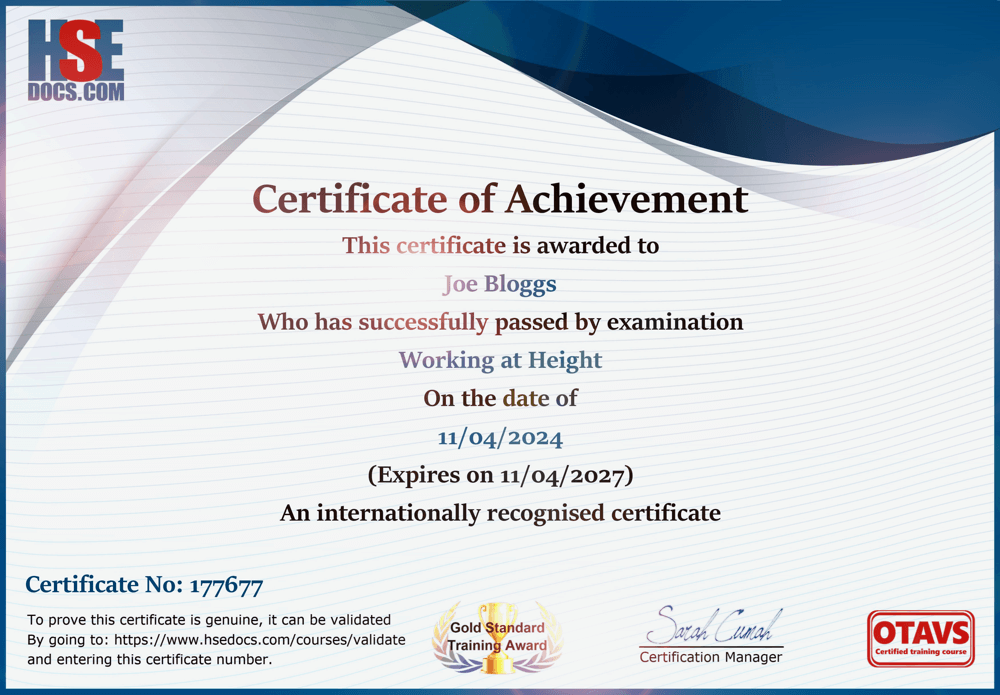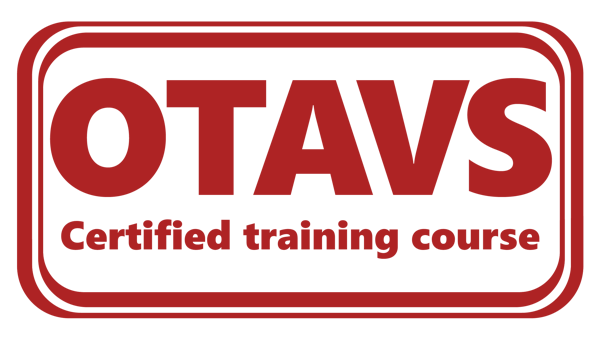Online Level 1 Food Safety Course from £4.99
AKA Food Hygiene

Course certificate valid for 3 years
Internationally accredited training
This course is ideal for anyone who handles pre-packaged foods and uncooked fruits and vegetables.
Individual courses for £9.99 each.
Ten or more courses are priced at £6.49 per course.
Bulk orders of 50 or over are available at just £4.99 per course.
Course duration: Between 1 ½ and 2 ½ hrs depending on learning speed.
Course format: Three video training modules, with a multiple-choice section at the end of each module.
Entry Requirements: Anyone can complete this course, whether they have previous experience or not.
This course suits you If you do not directly handle high-risk foods, such as shellfish, prawns, crabs, cooked meat, and poultry, or any unwrapped food except for fruit and vegetables.
For instance, employees who work in bars, food banks, front-of-house employees, retail stores, and food delivery drivers and riders.
Suppose you work in a cafe, chip shop, restaurant, fast food outlet, mobile catering unit, hotel kitchen, hospital kitchen, school kitchen, college kitchen, or outdoor cooking event. In that case, you must complete a Level 2 Food Safety Course.
Upon completing your Level 1 Food Safety course, your training certificate will be valid for three years. Local authorities and environmental health officers recognise it and count towards your food hygiene rating.
All successful candidates are entered on the national training register, and employers or others can verify certificates to prove they are genuine by clicking Validate a Certificate and typing in the certificate number.
Overview Of Level 1 Food Safety Course
Our Level 1 Food Safety Course adheres to the current national curriculum.
It covers the essentials for a level-one food handler and teaches how food can potentially become unsafe.
The learning topics covered in this HSE course include:
- Personal and workspace hygiene.
- Risk assessment and control measures.
- Temperature control and its importance.
- Cross-contamination risks.
- Food hazards and how to avoid them.
Personal and workspace hygiene emphasises the significance of cleanliness and the potential repercussions of not meeting the required standards to ensure food safety
The section on risk assessments explains how and why risks should be evaluated within a food environment and how to implement control measures to lessen or eradicate them.
The section of the course that discusses the importance and relevance of temperature control in storing or cooking highlights that it is a precise science. It must be strictly followed to prevent potential risks if overlooked.
The potential for food poisoning to rear its ugly head due to cross-contamination between different foodstuffs is a very real threat. Our course tackles this issue head-on, providing you with comprehensive knowledge and strategies to prevent such scenarios.
The final section deals with avoiding hazards using HACCP (Hazard, Analysis, Critical, Control, Point) to record, monitor, and reduce probable risks.
Local authorities recognise our Level 1 online Food Safety certificate, Environmental Health Officers and counts towards your Hygiene Rating, which you can find out more about in our blog - ‘Your Guide To Food Hygiene Ratings.’

Suppose you work in the retail or hospitality industry and are involved in handling packaged food, drinks or nuts, fruit and vegetables. In that case, you must possess a Level 1 Food Safety Certificate. This certification indicates that you have the necessary knowledge and understanding of the proper procedures for handling and storing food. The Level 1 Food Safety course is an easy-to-follow format suitable for all learners, presenting the fundamental principles and learning objectives clearly and concisely. During the course, candidates will understand the importance of maintaining food safety and the best practices for ensuring this, including the proper handling and storage of food.
The Level 1 Food Safety online course presents principals and learning objectives in an easy-to-follow manner suitable for all learners. Candidates will learn about the importance of:
- Understanding best food handling practices, identify hygiene hazards, and implement control measures.
- Understanding safe storage temperatures.
- Understanding the importance of personal and workstation hygiene.
- Understanding the industry regulations about preparing, cooking, and handling food safety.
- Understanding the legal obligations of food handlers.
- Understanding contamination and food poisoning.
- Understanding waste management, pest control and safe working environments.
- Understanding how and why the correct cleaning process should be carried out.
Food safety training is an essential aspect of any food service operation. Its primary objective is to meet regulatory requirements and ensure that all employees have a comprehensive understanding of the food safety course material and are fully aware of their responsibilities and duties when handling and preparing food items. This training is crucial in preventing foodborne illnesses, maintaining the quality of food products, and protecting the health and well-being of customers. It covers various topics, including food storage, handling, preparation, and sanitation practices, and emphasises the importance of proper hygiene and cleanliness in the workplace. By providing food safety training, businesses can ensure their employees have the knowledge and skills to maintain a safe and healthy environment.
Upon completion of this Level 1 Food Safety Course, you will gain full competency in:
- Best practices to use and implement when handling food.
- Identify hygiene hazards and implement relevant control measures.
- Understanding the reason for safe temperature controls for storage and cooking.
- Knowing how to avoid foods in the temperature danger zone and why they should be avoided.
- Understanding the importance of personal and workstation hygiene and hygiene controls.
- Knowing the industry regulations about handling food safely.
- Best practices to use and implement when handling food.
- Identify hygiene hazards and implement relevant control measures, including HACCP. Please learn more about HACCP's importance in one of our recent food safety blogs.
- Understanding the reason for safe temperature controls for storage and cooking
- Knowing how to avoid foods in the temperature danger zone and why they should be avoided.
- Understanding the importance of personal and workstation hygiene and hygiene controls.
- Knowing the industry regulations about handling food safely.
- Understanding how and what food poisoning and contaminants are and the effect these can have on consumers. Understanding the importance of hygiene concerning waste management, pest control and safe working environments.Understanding the importance of hygiene with respect to waste management, pest control and safe working environments.
- Understanding their moral and legal responsibilities to the employer and consumer, including when to undertake risk assessments.
The amount of food safety training you need will be based on various factors, primarily your job responsibilities and daily duties. This aligns with EC Regulation 852, which specifies that your food safety training should match your job role. We've created a helpful guide to help you determine the level of food safety training required in a work setting.
| Food Safety Level Guide | |
|---|---|
| Front of House & Wait Staff | Level 1 |
| Porter, Assistants & Food banks | Level 1 |
| Line Cooks | Level 2 |
| Kitchen Managers & Supervisors | Level 3 |
| Restaurant Owners or Ops Managers | Level 4 |

Contact Our Food Health & Safety Experts
We are always happy to help here at HSE Docs, so if you have any questions or concerns about the online Food Safety course or any other HSE Docs online training queries, please give us a quick call.

 CART
CART 














